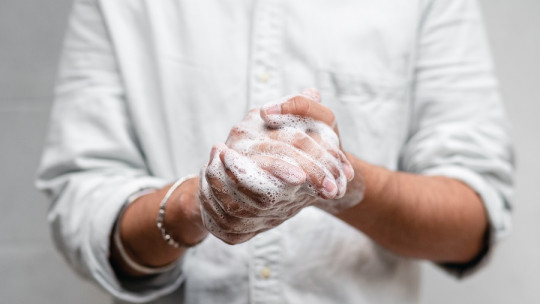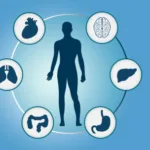
Hoarding syndrome, also called hoarding disorder (in the Diagnostic Manual of Mental Disorders, DSM-5), is a new disorder in the latest edition of the manual, although not a new disorder in clinical practice.
It is related to the classically known “Diógenes Syndrome”, although it has important differences. Throughout this article we will use the name hoarding syndrome to refer to the DSM-5 hoarding disorder (they will be interchangeable).
What is hoarding syndrome?
Compulsive hoarding syndrome is a psychological alteration linked to the accumulation of objects and possessions of all kinds, from furniture, writings and instruments to plants and other living beings. Being a disorder, it generates significant discomfort for the person who manifests it, or for the people around them.
Differences with Diogenes syndrome
Compulsive hoarding syndrome or hoarding disorder is classified within Obsessive-Compulsive Disorders, and differs from the classic “Diógenes Syndrome” in that Diogenes Syndrome typically appears in patients with some type of dementia or frontal injury, as well as in patients with schizophrenia and/or with other significant brain impairments.
On the other hand, in compulsive hoarding syndrome there is no other mental disorder that better explains the symptoms, nor is it attributable to another medical condition such as brain damage, cerebrovascular disease or Prader-Willy syndrome.
Furthermore, Diogenes Syndrome does not exist as an official diagnosis in any reference manual (neither in the ICD-10 nor in the DSM); It is rather a “popular” or social nomenclature.
Symptoms of hoarding syndrome
Symptoms of hoarding syndrome include the following phenomena.
1. Difficulty throwing away possessions
The patient shows great difficulty getting rid of possessions and does not pay attention to the real value they have (whether they have it or not).
2. Discomfort about throwing away
The difficulty in discarding things or objects is due to a need that the person perceives to save the objects; that is, “you need to save them.” This need entails significant discomfort associated with getting rid of objects
3. Accumulation of possessions
The above symptoms cause a large accumulation of various objects and possessions, whether furniture, old newspapers, broken toys, books, boxes, magazines, bags, etc. This accumulation congests and clutters the areas of the house intended for living (for example the bathroom, the kitchen, the living room…), and significantly compromises their use.
Furthermore, if the areas are organized, it is thanks to the intervention of third parties (relatives, authorities, cleaning staff…), never thanks to the patient who suffers from compulsive hoarding syndrome.
4. Significant discomfort
The accumulation of objects leads to significant psychological discomfort for the patient, and/or a deterioration in their daily functioning in all (or almost all) areas of their life (personal, social, work…).
Besides, the patient’s environment can be dangerous for him and/or for others, being the areas of the home accumulated with objects, susceptible to fires, for example.
Specifications
In compulsive hoarding syndrome, the diagnosis must be specified if excessive acquisition is also included. This means, if the person also buys, acquires (or requests) non-necessary objects or for which there is not enough space in the home.
Other specifications included in the DSM-5 for hoarding syndrome are:
Characteristics
It is estimated that between 2-6% of the American population suffers from it. Regarding its prevalence, in the general population (without mental disorder), it is more prevalent in men than in women. However, in the clinical population (with some other mental disorder), there are more women than men with compulsive hoarding syndrome.
It occurs more frequently in older people (especially between 55 and 94 years old), versus young people (between 34 and 44 years old). Furthermore, the first symptoms usually appear at ages 11 and 15.
Comorbidity with other disorders
It is considered a chronic disorder, although it can be treated or improved Regarding its comorbidity with other disorders, major depressive disorders, social phobias, GAD (Generalized Anxiety Disorder) and OCD (Obsessive Compulsive Disorder) are usually associated.
Specifically, 75% of patients with compulsive hoarding syndrome also have a mood or anxiety pathology. On the other hand, 20% of cases with the syndrome also have symptoms that meet the criteria for OCD. However, we must remember that none of the associated disorders completely explain the symptoms of hoarding syndrome.
Causes
Regarding its etiology, although the causes are not entirely clear, There are some risk factors for developing compulsive hoarding syndrome related to the person’s temperament, their environment (environment) and their genetics.
1. Temperament
An indecisive or perfectionist temperament is typical in these patients.
2. Family history
Having a family member with hoarding syndrome It also increases the probability of suffering from it yourself.
3. Stressful events
Going through a particularly stressful period, as well as the occurrence of certain stressful life events, is related to the appearance of hoarding disorder. These events include the death of a loved one, losing possessions in a fire, an eviction, or a divorce, for example.
4. Age
Risk factors are also related to a specific age of onset, as we have already seen; 11 and 15 years old. Over time, symptoms worsen Older people are also more likely to develop it.
Treatment
Psychological treatment may include cognitive behavioral therapy as well as exposure techniques with response prevention (for example exposing the patient to get rid of the objects without recovering them) and important emotional support, especially to alleviate the symptoms that are usually accompanied, such as anxiety or depression.
At a psychopharmacological level, antidepressants or anxiolytics can be administered to treat the symptoms comorbid to Compulsive Hoarding Syndrome.








